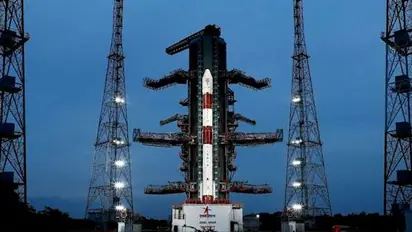ISRO to launch PSLV-C58 with XPoSAT on January 1

Synopsis
The Indian Space Research Organisation has announced that the XPoSat mission will lift off at 9:10 am using a Polar Satellite Launch Vehicle (PSLV). This mission is not only India's first dedicated polarimetry mission but also the world's second, following Nasa's Imaging X-ray Polarimetry Explorer (IXPE) launched in 2021.
The Indian Space Research Organization (ISRO) is all set to begin the New Year with the launch of its first X-Ray Polarimeter Satellite (XPoSat) to investigate the intense polarisation of X-ray sources in space.
Astronomers will be able to learn more about some of the most significant cosmic occurrences and enhance their grasp of how the intriguing system of X-rays works in space thanks to the study mission. Astronomers are very interested in the polarisation of X-rays from celestial sources, particularly in light of recent findings from NASA's IXPE polarimetry project.
ISRO’s old workhorse PSLV will execute the mission at about 9.10am on Monday. After being injected into a 650 km Low Earth Orbit (LEO), it will continue to transmit data for the following five years. The U R Rao Satellite Centre (URSC), an ISRO facility, and the Bengaluru-based Raman Research Institute (RRI) will each build one of the satellite's two primary payloads.
The main payload POLIX will serve as an X-ray Polarimeter designed for astronomical observations within the medium energy band of 8-30 keV, and will observe bright astronomical sources across various categories.
Another payload XSPECT is an X-ray Spectroscopy and Timing instrument, designed to offer fast timing and spectroscopic resolution in soft X-rays (0.8-15 keV). It will observe a variety of sources, including X-ray pulsars, black hole binaries, low-magnetic field neutron stars (NS), active galactic nuclei (AGNs), and magnetars.
With the first-ever solar observatory, Aditya L-1, slated to arrive in its destination during the first week of January, the space agency is likely to have a busy start to the year. After being launched on September 2, the satellite is travelling to the Sun-Earth system's L1 point, which is located around 1.5 million kilometres from Earth.